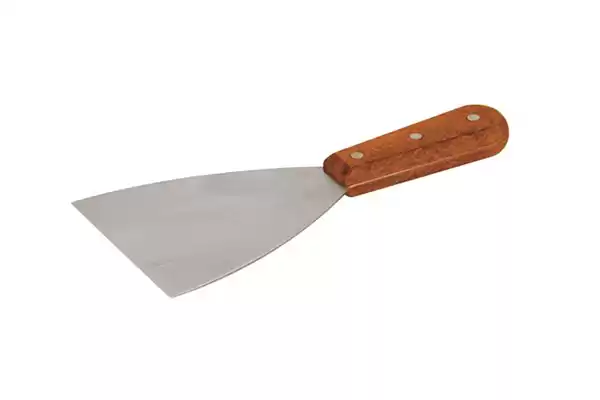In the world of DIY projects and home maintenance, having the right tools at your disposal can make all the difference. One such tool that deserves a place in every toolbox is the scraper. Whether you’re a seasoned DIY enthusiast or just starting out, understanding what a scraper is and how it can be used will open up a world of possibilities. In this article, we will explore the versatility and practicality of scrapers, shedding light on their various uses and the benefits they bring to your projects.
The Many Faces of a Scraper
Scrapers come in various shapes and sizes, each designed for specific tasks. Let’s delve into the different types of scrapers and their applications:
Paint Scrapers: Bidding Farewell to Old Layers
Paint scrapers are perhaps the most well-known type of scraper. As the name suggests, they are used to remove old paint or varnish from surfaces such as walls, furniture, or wooden floors. With a sharp blade or edge, paint scrapers efficiently lift away layers of paint, revealing a clean and smooth surface beneath. Whether you’re giving a room a fresh coat of paint or restoring a vintage piece of furniture, a paint scraper is a valuable tool in your arsenal.
Floor Scrapers: Tackling Stubborn Adhesives
When it comes to removing old flooring or stubborn adhesives, a floor scraper is the go-to tool. These sturdy scrapers are designed to handle the tough task of lifting and scraping away materials such as vinyl, carpet, or tile. The sharp blade or chisel-like edge of a floor scraper makes light work of removing old flooring, allowing you to start afresh or prepare the surface for new installations. Whether you’re renovating your home or preparing a space for a new floor, a floor scraper is your trusted companion.
Glass Scrapers: Achieving Crystal-Clear Surfaces
Glass scrapers are specifically designed for cleaning and smoothing glass surfaces. They are commonly used to remove stubborn residues, adhesive remnants, or paint specks from windows, mirrors, or glass tabletops. The sharp and precise blade of a glass scraper ensures that you can achieve a smooth and clear finish without scratching or damaging the glass. When you want your windows to sparkle or your glass surfaces to shine, a glass scraper is an indispensable tool.
The Benefits of Using a Scraper
Now that we’ve explored the different types of scrapers and their applications, let’s take a closer look at the benefits of incorporating a scraper into your toolkit:
Efficiency and Time-Saving
Scrapers are designed to make your tasks more efficient and save you valuable time. With their sharp blades or edges, they effortlessly remove unwanted materials, whether it’s old paint, adhesives, or residues. By using a scraper, you can complete your projects more swiftly, leaving you with more time to focus on other aspects of your DIY endeavors.
Versatility and Cost-Effectiveness
One of the greatest advantages of scrapers is their versatility. A single scraper can serve multiple purposes, making it a cost-effective addition to your toolkit. Whether you’re working on a painting project, renovating a room, or cleaning glass surfaces, a scraper can be used in various applications. Instead of investing in multiple specialized tools, a scraper provides a practical and budget-friendly solution.
Precision and Control
Scrapers offer a high level of precision and control, allowing you to achieve clean and precise results. The sharp blades or edges enable you to scrape away materials with accuracy, ensuring that you can achieve the desired outcome without damaging the underlying surface. Whether you’re removing old paint or adhesive residues, a scraper gives you the control you need for a professional-looking finish.
Conclusion
In conclusion, a scraper is a versatile and indispensable tool that simplifies a wide range of DIY projects. From removing old paint and adhesives to cleaning glass surfaces, scrapers offer efficiency, versatility, and precision. By incorporating a scraper into your toolkit, you can save time, tackle various tasks with ease, and achieve professional-looking results. So, whether you’re a seasoned DIY enthusiast or a beginner, don’t overlook the power of a scraper – it may just become your new favorite tool.
FAQs
Q: Can a scraper be used on delicate surfaces like wood?
A: Yes, scrapers can be used on delicate surfaces like wood; however, it’s important to exercise caution and choose a scraper with a blade or edge that won’t damage the material. It’s always a good idea to test the scraper on a small, inconspicuous area first.
Q: Are scrapers suitable for removing rust from metal surfaces?
A: Yes, scrapers can be effective in removing rust from metal surfaces. However, dependingon the severity of the rust and the type of metal, you may need to use additional tools or rust removal products in conjunction with the scraper for optimal results.
Q: Can a scraper be sharpened if the blade becomes dull?
A: Yes, many scrapers have replaceable blades that can be easily sharpened or replaced when they become dull. It’s important to follow the manufacturer’s instructions for sharpening or replacing the blades to ensure safety and maintain the tool’s effectiveness.
Post time: 1月-25-2024







